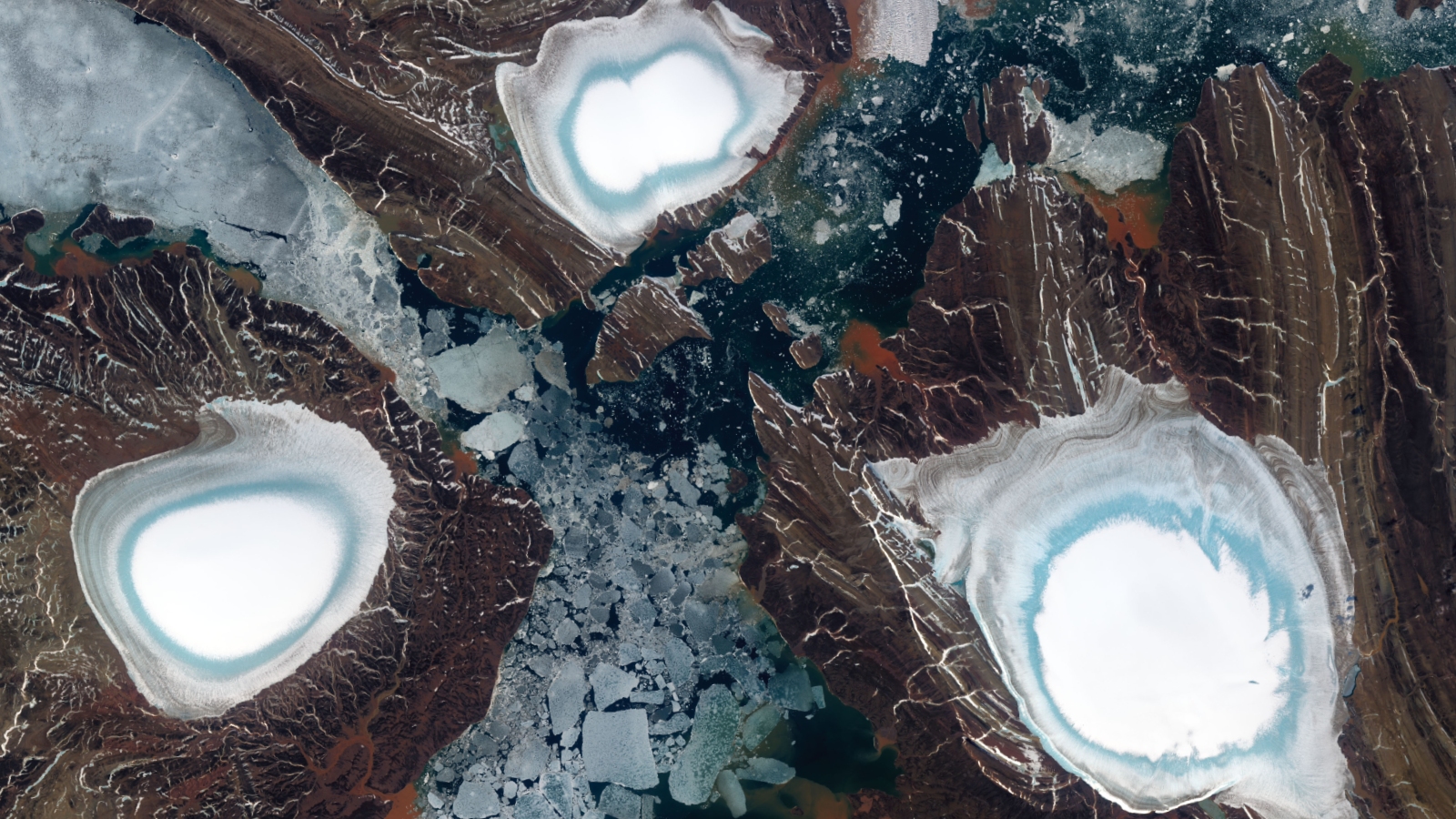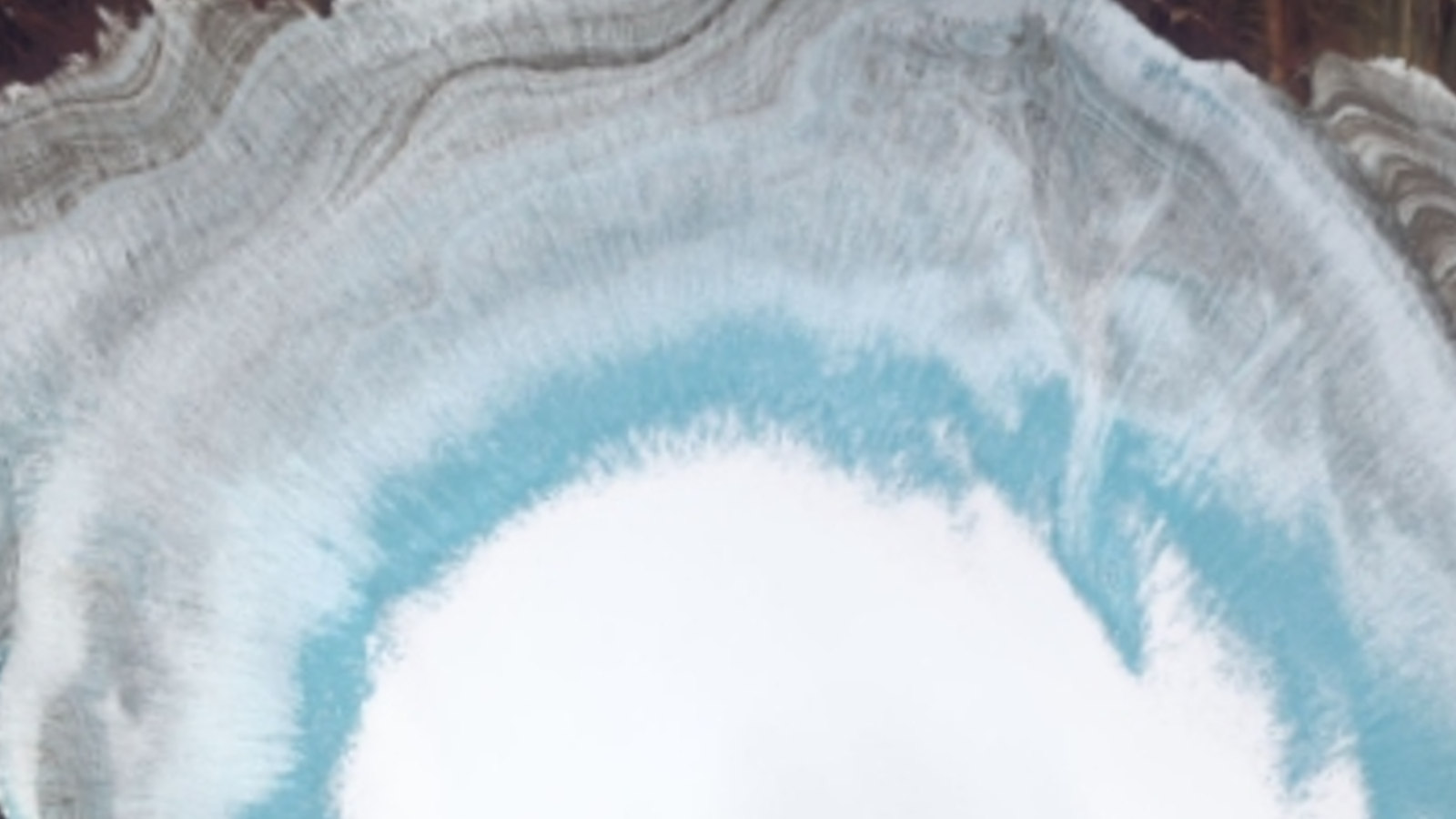
This stunning satellite image shows a trio of barren islands in the Russian Arctic, offering a rare glimpse at the colorful, concentric rings of the region's ever-present ice caps.
The Severnaya Zemlya archipelago is a collection of Russian-owned islands in the Arctic Ocean that cover around 14,300 square miles (37,000 square kilometers) — around the same size as Maryland — beyond Siberia's northernmost coastline. The archipelago sits along the boundary between the Kara Sea and the Laptev Sea and has four main landmasses: Komsomolets Island, Pioneer Island, October Revolution Island and Bolshevik Island.
The region was only discovered in 1913 and was not properly visited until a couple decades later, making it one of the last of Earth's major archipelagos to be properly mapped, according to Encyclopedia Britannica.
This photo shows the intersection between Komsomolets Island (center), Pioneer Island (left) and October Revolution Island (right), which are separated by just a few miles of ocean, according to NASA's Earth Observatory.
For most of the year, these islands are largely covered by ice and snow and are connected to one another by thick sea ice. But for around two months every summer, temperatures creep above freezing, enabling some of the frozen water to melt away, which exposes the barren landscape beneath. The only things that live there are lichens and a few bushes.
The thickest and oldest ice remains during the summer months, in the form of glaciers and hill-shaped ice caps that cover around half of the archipelago's surface.
Related: 12 amazing images of Earth from space

The ice caps, which can reach up to 820 feet (250 meters) tall, are made up of multi-year ice, meaning that additional layers of snow are compacted into their icy summits every winter while they also lose ice to the summer melt. When viewed from above, this cycle of melting and refreezing creates the stunning concentric rings of color seen in this image, according to NASA's Earth Observatory.
The Severnaya Zemlya archipelago is also home to Russia's largest glacier, the Academy of Sciences Glacier, which is located to the north of the photographed ice cap on Komsomolets Island. This gigantic ice mass covers roughly 2,150 square miles (5,570 square km), which is around two-thirds of the island's surface.
However, the archipelago's year-round ice is slowly disappearing thanks to human-caused climate change. A 2023 study revealed that between 1965 and 2021, the region's glaciers shrank by around 5%, with a similar reduction predicted for the surrounding ice caps.
This rate of ice loss will likely increase in the future as projected warming takes us past irreversible tipping points.







